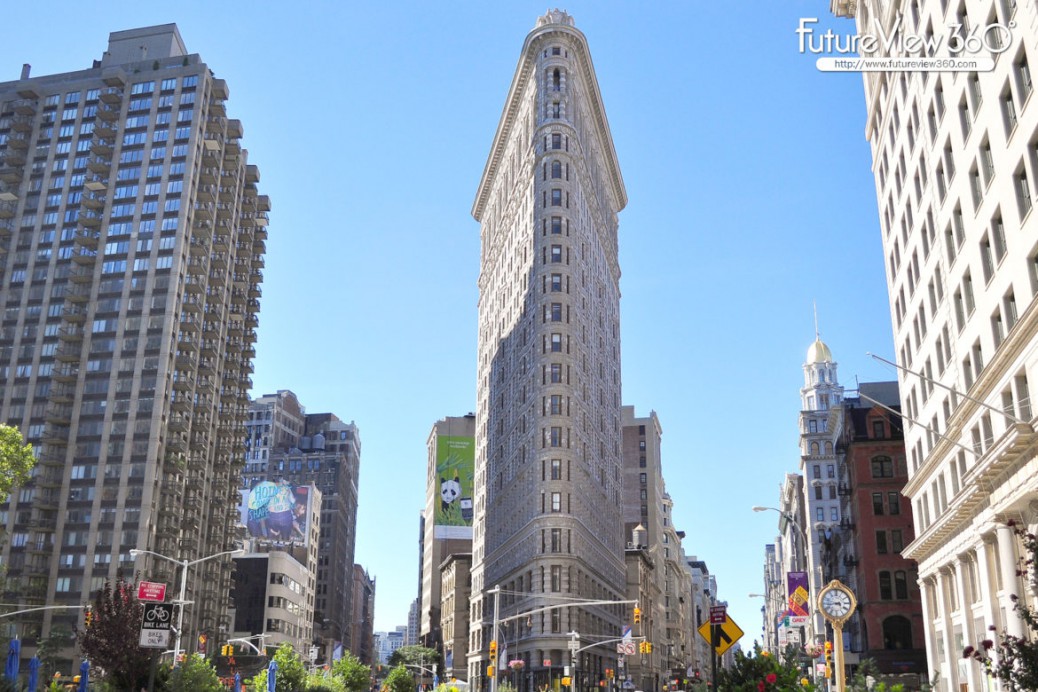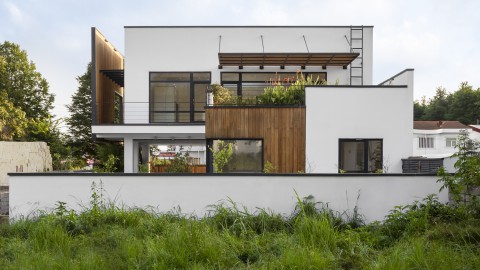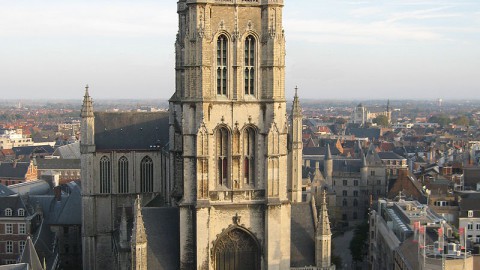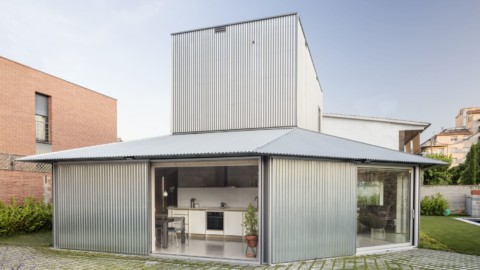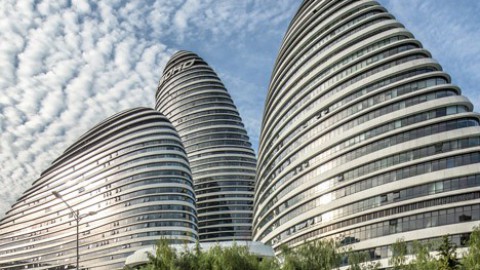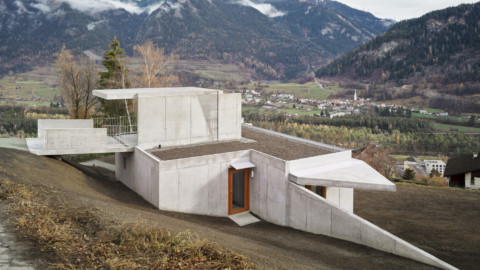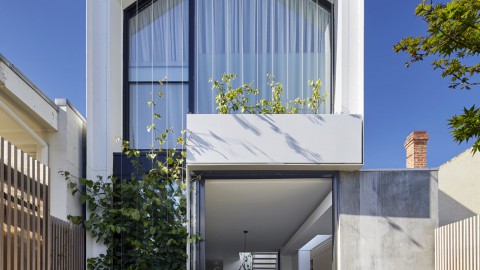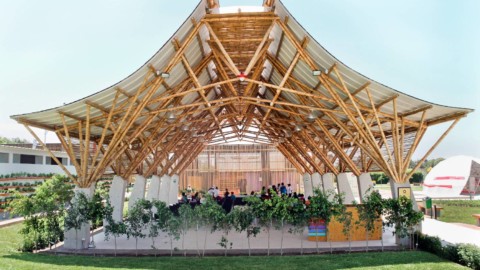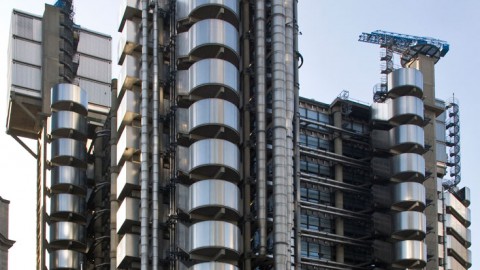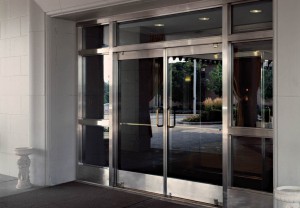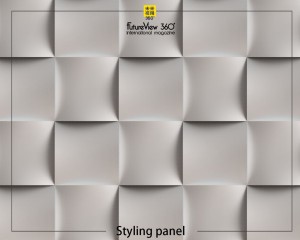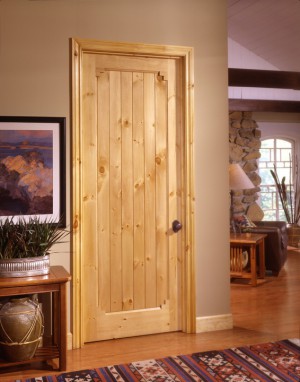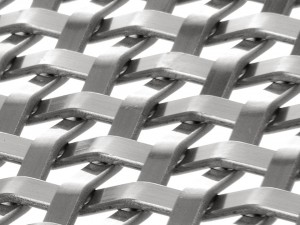The Flatiron Building 熨斗大廈
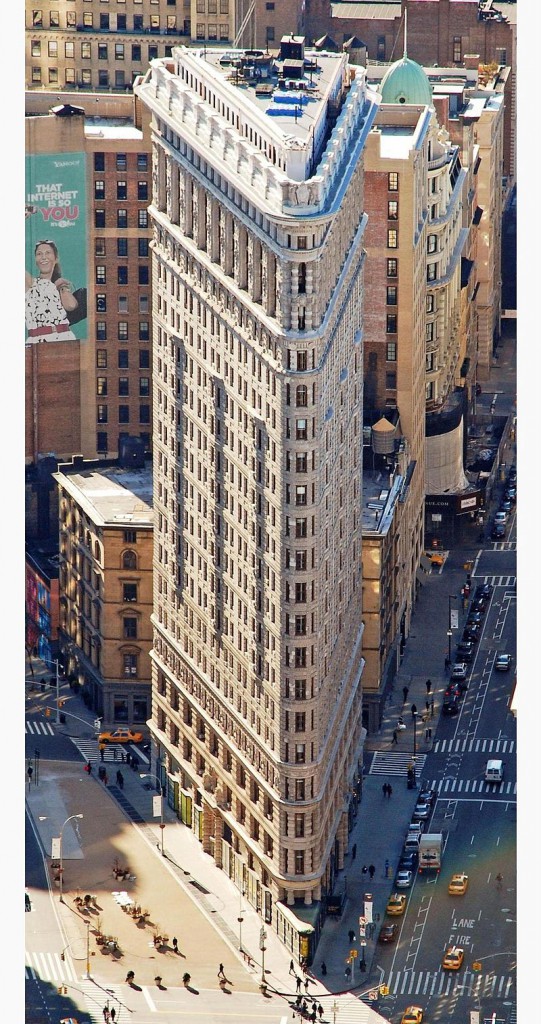
The Flatiron Building, originally the Fuller Building, is a triangular 22-story, 285-foot (86.9 m) tall steel-framed landmarked building located at 175 Fifth Avenue in the Flatiron District neighborhood of borough of Manhattan, New York City. Upon completion in 1902, it was one of the tallest buildings in the city at 20 floors high and one of only two “skyscrapers” north of 14th Street – the other being the Metropolitan Life Insurance Company Tower, one block east. The building sits on a triangular block formed by Fifth Avenue, Broadway, and East 22nd Street – where the building’s 87-foot (27 m) back end is located – with East 23rd Street grazing the triangle’s northern (uptown) peak. As with numerous other wedge-shaped buildings, the name “Flatiron” derives from its resemblance to a cast-iron clothes iron.
The building, which has been called “one of the world’s most iconic skyscrapers and a quintessential symbol of New York City”,anchors the south (downtown) end of Madison Square and the north (uptown) end of the Ladies’ Mile Historic District. The neighborhood around it is called the Flatiron District after its signature building, which has become an icon of New York City. The Flatiron Building was designated a New York City landmark in 1966, was added to the National Register of Historic Places in 1979, and was designated a National Historic Landmark in 1989.
Flatiron大廈最初是富勒大廈,是一座三角形的22層,高285英尺(86.9米)高的鋼結構地標建築,位於紐約市曼哈頓區Flatiron區附近的第五大道175號。在1902年建成後,它是該市最高的建築之一,高20層,是第14街以北僅有的兩座“摩天大樓”之一 – 另一座是大都會人壽保險公司大樓,東面一個街區。該建築坐落在由第五大道,百老彙和東22街形成的三角形街區 – 該建築的87英尺(27米)後端位於該區域 – 東23街放牧三角形的北部(住宅區)高峰。與許多其他楔形建築一樣,“Flatiron”這個名字源於它與鑄鐵衣服鐵的相似之處。
該建築被稱為“世界上最具標誌性的摩天大樓之一,也是紐約市的典型象徵”,位於麥迪遜廣場的南(市中心)盡頭和女人英里歷史街區的北部(上城區)。它周圍的社區被稱為Flatiron區,其標誌性建築已成為紐約市的標誌性建築。 Flatiron大樓於1966年被指定為紐約市的標誌性建築,於1979年被列入國家史蹟名錄,並於1989年被指定為國家歷史地標。
Coordinates:40°44′28″N 73°59′23″WCoordinates: 40°44′28″N 73°59′23″W
Built:1902
Architect:D. H. Burnham & Co.:
Daniel Burnham
Frederick Dinkelberg
Architectural style:Renaissance revival
坐標:40°44’28“N 73°59’23”WCoordinates:40°44’28“N 73°59’23”W
內置:1902
建築師:d。 H. Burnham&Co。:
丹尼爾伯納姆
弗雷德里克丁克爾伯格
建築風格:文藝復興時期的複興
The site on which the Flatiron Building would stand was bought in 1857 by Amos Eno, who shortly built the Fifth Avenue Hotel on a site diagonally across from it. Eno tore down the four-story St. Germaine Hotel on the south end of the lot, and replaced it with a seven-story apartment building, the Cumberland. On the remainder of the lot he built four three-story buildings for commercial use. This left four stories of the Cumberland’s northern face exposed, which Eno rented out to advertisers, including The New York Times, who installed a sign made up of electric lights. Eno later put a canvas screen on the wall, and projected images onto it from a magic lantern on top of one of his smaller buildings, presenting advertisements and interesting pictures alternately. Both the Times and the New York Tribune began using the screen for news bulletins, and on election nights tens of thousands of people would gather in Madison Square, waiting for the latest results.
During his life Eno resisted suggestions to sell “Eno’s flatiron”, as the site had become known, but after his death in 1899 his assets were liquidated, and the lot went up for sale. The New York State Assembly appropriated $3 million for the city to buy it, but this fell through when a newspaper reporter discovered that the plan was a graft scheme by Tammany Hall boss Richard Croker. Instead, the lot was bought at auction by William Eno, one of Amos’s sons, for $690,000 – the elder Eno had bought the property for around $30,000 forty years earlier. Three weeks later, William re-sold the lot to Samuel and Mott Newhouse for $801,000. The Newhouses intended to put up a 12-story building with street-level retail shops and bachelor apartments above, but two years later they sold the lot for about $2 million to Cumberland Realty Company, an investment partnership created by Harry S. Black, CEO of the Fuller Company. The Fuller Company was the first true general contractor that dealt with all aspects of building construction except design, and they specialized in building skyscrapers.
Black intended to construct a new headquarters building on the site, despite the recent deterioration of the surrounding neighborhood, and he engaged Chicago architect Daniel Burnham to design it. The building, which would be Burnham’s first in New York City, would also be the first skyscraper north of 14th Street. It was to be named the Fuller Building after George A. Fuller, founder of the Fuller Company and “father of the skyscraper”, who had died two years earlier, but locals persisted in calling it “The Flatiron”, a name which has since been made official.
Flatiron Building所在的地點於1857年由Amos Eno購買,Amos Eno很快就在第五大道酒店對面建造了一個對角線。伊諾拆除了該地塊南端的四層St. Germaine酒店,取而代之的是一座七層樓的公寓樓坎伯蘭。在該地塊的其餘部分,他建造了四棟三層樓房用於商業用途。這留下了Cumberland北面露出的四個故事,Eno租給了廣告商,包括紐約時報,他們安裝了一個由電燈組成的標誌。伊諾後來在牆上放了一個帆布屏幕,並在他的一個較小的建築物頂部的魔術燈籠上投影圖像,交替地展示廣告和有趣的圖片。 “紐約時報”和“紐約論壇報”都開始使用屏幕播放新聞簡報,在選舉之夜,數万人將聚集在麥迪遜廣場,等待最新結果。
在他的生命中,Eno拒絕出售“Eno’s flatiron”的建議,因為這個網站已經知道了,但是在1899年去世後,他的資產被清算,並且這個地段出售了。紐約州議會撥款300萬美元用於購買該城市,但當報紙記者發現該計劃是Tammany Hall老闆理查德克羅克的貪污計劃時,這種情況就失敗了。相反,該拍品是由Amos的兒子之一William Eno以690,000美元的價格拍賣的 – 這位年長的Eno早在四十年前以30,000美元的價格購買了該房產。三週後,威廉以801,000美元的價格將這批產品賣給了Samuel和Mott Newhouse。 Newhouses打算建造一座12層高的建築,上面有街道零售商店和單身公寓,但兩年後他們以200萬美元的價格將這筆地產出售給Cumberland Realty Company,這是一家由首席執行官Harry S. Black創建的投資合夥公司。富勒公司富勒公司是第一個真正的總承包商,處理建築施工的所有方面,除了設計,他們專門建造摩天大樓。
儘管周圍社區近期惡化,但黑方打算在該地點建造一座新的總部大樓,並與芝加哥建築師丹尼爾伯納姆合作設計。該建築是伯納姆在紐約市的第一座建築,也將成為第14街以北的第一座摩天大樓。它被命名為富勒大廈,僅次於富勒公司的創始人喬治·富勒(George A. Fuller)和兩年前去世的“摩天大樓的父親”,但當地人堅持稱其為“熨斗”(The Flatiron),被正式製作。
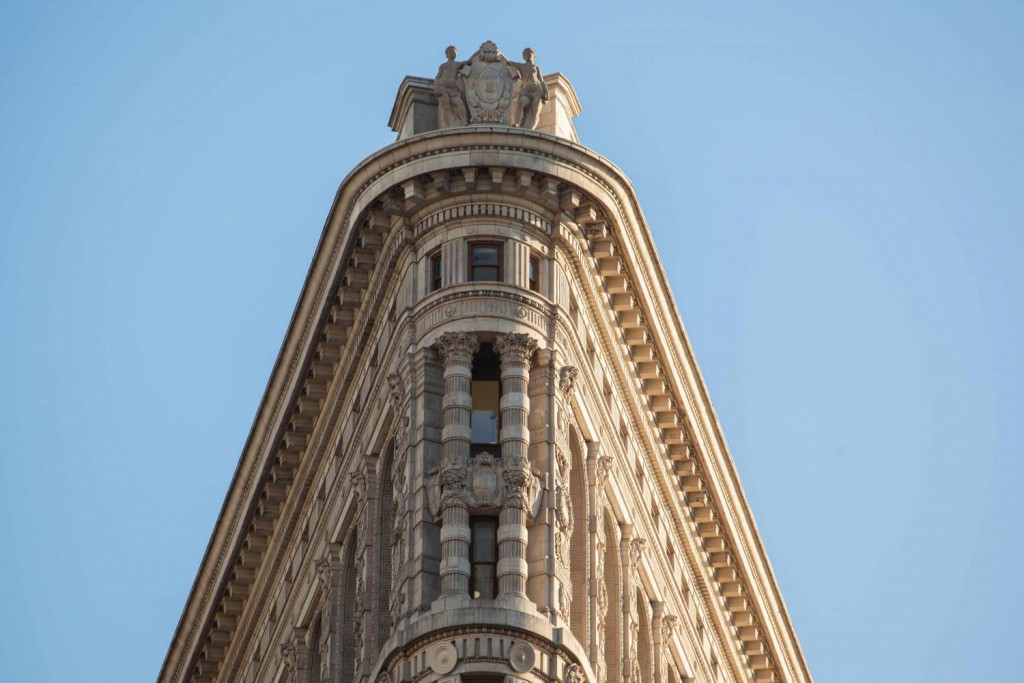
Design and construction
The Flatiron Building was designed by Chicago’s Daniel Burnham as a vertical Renaissance palazzo with Beaux-Arts styling. Unlike New York’s early skyscrapers, which took the form of towers arising from a lower, blockier mass, such as the contemporary Singer Building (built 1902–08), the Flatiron Building epitomizes the Chicago school conception: like a classical Greek column, its facade – limestone at the bottom changing to glazed terra-cotta from the Atlantic Terra Cotta Company in Tottenville, Staten Island as the floors rise – is divided into a base, shaft, and capital.
Early sketches by Daniel Burnham show a design with an (unexecuted) clockface and a far more elaborate crown than in the actual building. Though Burnham maintained overall control of the design process, he was not directly connected with the details of the structure as built; credit should be shared with his designer Frederick P. Dinkelberg, a Pennsylvania-born architect in Burnham’s office, who first worked for Burnham in putting together the 1893 World’s Columbian Exposition in Chicago, for which Burnham was the chief of construction and master designer. Working drawings for the Flatiron Building, however, remain to be located, though renderings were published at the time of construction in American Architect and Architectural Record.
Building the Flatiron was made feasible by a change to New York City’s building codes in 1892, which eliminated the requirement that masonry be used for fireproofing considerations. This opened the way for steel-skeleton construction. Since it employed a steel skeleton – it could be built to 22 stories (285 feet) relatively easily, which would have been difficult using other construction methods of that time. It was a technique familiar to the Fuller Company, a contracting firm with considerable expertise in building such tall structures. At the vertex, the triangular tower is only 6.5 feet (2 m) wide; viewed from above, this pointed end of the structure describes an acute angle of about 25 degrees.
Purdy and Henderson were the structural engineers. They strengthened the structure to deal with the wind load, as the building was quite narrow and therefore had less volume to resist it. They designed it so that, in theory, the building would turn compactly before any failure could occur in the metal structure. For the first time the construction of a skyscraper steel structure could be witnessed in full by the public, an event that received a great response and was immortalized by photographers Edward Steichen and Alfred Steiglitz.
The “cowcatcher” retail space at the front of the building was not part of Burnham or Dinkelberg’s design, but was added at the insistence of Harry Black in order to maximize the use of the building’s lot and produce some retail income to help defray the cost of construction. Black pushed Burnham hard for plans for the addition, but Burnham resisted because of the aesthetic effect it would have on the design of the “prow” of the building, where it would interrupt the two-story high Classical columns which were echoed at the top of the building by two columns which supported the cornice. Black insisted, and Burnham was forced to accept the addition, despite the interruption of the design’s symmetry. Another addition to the building not in the original plan was the penthouse, which was constructed after the rest of the building had been completed to be used as artists’ studios, and was quickly rented out to artists such as Louis Fancher, many of whom contributed to the pulp magazines which were produced in the offices below.
Once construction of the building began, it proceeded at a very fast pace. The steel was so meticulously pre-cut that the frame went up at the rate of a floor each week. By February 1902 the frame was complete, and by mid-May the building was half-covered by terra-cotta tiling. The building was completed in June 1902, after a year of construction.
New York’s Flatiron Building was not the first building of its triangular ground-plan: aside from a possibly unique triangular Roman temple built on a similarly constricted site in the city of Verulamium, Britannia, the Maryland Inn in Annapolis (1782), the Granger Block in Syracuse, New York (1869), the Phelan Building in San Francisco (1881), the Gooderham Building of Toronto (1892), and the English-American Building in Atlanta (1897) predate it. All, however, are smaller than their New York counterpart.
The facade of the Flatiron Building was restored in 1991 by the firm of Hurley & Farinella.
設計和施工
Flatiron大樓由芝加哥的Daniel Burnham設計,是一座具有Beaux-Arts造型的垂直文藝復興時期的宮殿。與紐約早期的摩天大樓不同,摩天大樓採用現代歌手大廈(建於1902年至08年)的形式,由較低,較塊的群體形成塔樓形式,而熨斗大廈則體現了芝加哥學校的概念:如希臘古典柱,其立面 – 底部的石灰石改變為史坦頓島Tottenville的Atlantic Terra Cotta公司的玻璃陶土,因為地板上升 – 分為基座,豎井和首都。
丹尼爾·伯納姆(Daniel Burnham)的早期草圖展示了一種設計,其中有一個(未經執行的)錶盤和比實際建築更精緻的表冠。雖然Burnham對設計過程保持了全面的控制,但他並沒有直接與建築結構的細節聯繫起來;應該與他的設計師Frederick P. Dinkelberg分享信譽,他是賓夕法尼亞州出生的Burnham辦公室的建築師,他首先為Burnham在芝加哥舉辦的1893年世界哥倫比亞博覽會工作,Burnham是建築和設計大師的首席。然而,Flatiron Building的工作圖仍然存在,儘管在美國建築師和建築實錄中建築時已經發布了渲染圖。
1892年改變紐約市的建築規範使得熨斗的建造變得可行,這消除了砌築用於防火考慮的要求。這為鋼骨架施工開闢了道路。由於它採用了鋼骨架 – 它可以相對容易地建造成22層(285英尺),這在當時使用其他建築方法時會很困難。這是富勒公司所熟悉的一種技術,富勒公司是一家在建造這種高大結構方面具有豐富專業知識的承包公司。在頂點,三角形塔只有6.5英尺(2米)寬;從上方看,該結構的尖端描述了約25度的銳角。
Purdy和Henderson是結構工程師。他們加強了處理風荷載的結構,因為建築物非常狹窄,因此抵抗它的體積較小。他們設計它使得理論上,在金屬結構發生任何故障之前,建築物會變得緊湊。第一次,公眾可以完全看到摩天大樓鋼結構的建造,這一事件得到了很大的響應,並被攝影師Edward Steichen和Alfred Steiglitz永生。
建築物前面的“cowcatcher”零售空間不是Burnham或Dinkelberg的設計的一部分,但是在Harry Black的堅持下添加,以最大限度地利用建築物的地段並產生一些零售收入來幫助支付成本建設。布萊克努力推動伯納姆計劃加入,但伯納姆拒絕了,因為它對建築物“船頭”的設計具有審美效果,它會打斷兩層高的古典柱子,這些柱子在頂部迴盪兩幢支撐簷口的建築物。布萊克堅持認為,儘管設計的對稱性受到干擾,伯納姆也不得不接受這一補充。建築物的另一個不在原計劃中的是頂層公寓,它是在建築的其餘部分完工後用作藝術家的工作室建造的,並很快出租給了Louis Fancher等藝術家,其中許多人貢獻了到下面辦公室生產的紙漿雜誌。
一旦建築物開始建造,它就會以非常快的速度前進。鋼材經過精心預切割,每週以一層地板的速度上升。到1902年2月,框架已經完工,到5月中旬,該建築被陶土磚覆蓋了一半。經過一年的建設,該建築於1902年6月完工。
紐約的熨斗大廈不是其三角形平面圖的第一座建築:除了可能獨特的三角形羅馬神廟,建在Verulamium,Britannia,安納波利斯的馬里蘭旅館(1782年),格蘭傑街區的類似收縮地點在紐約錫拉丘茲(1869年),舊金山的Phelan大樓(1881年),多倫多的Gooderham大樓(1892年)和亞特蘭大的英美大廈(1897年)早於此。然而,所有這些都比他們的紐約小。
Flatiron大樓的外立面於1991年由Hurley&Farinella公司修復。

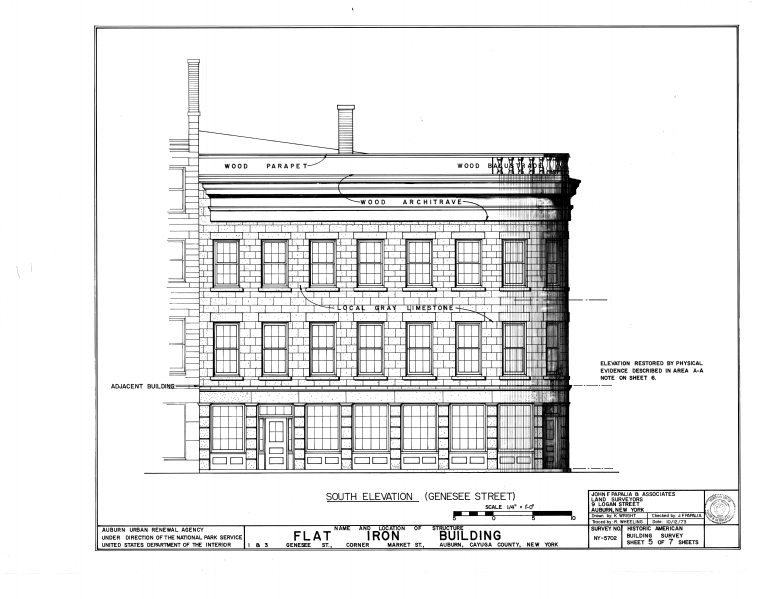
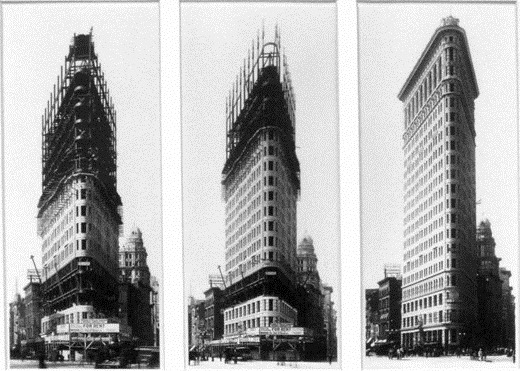
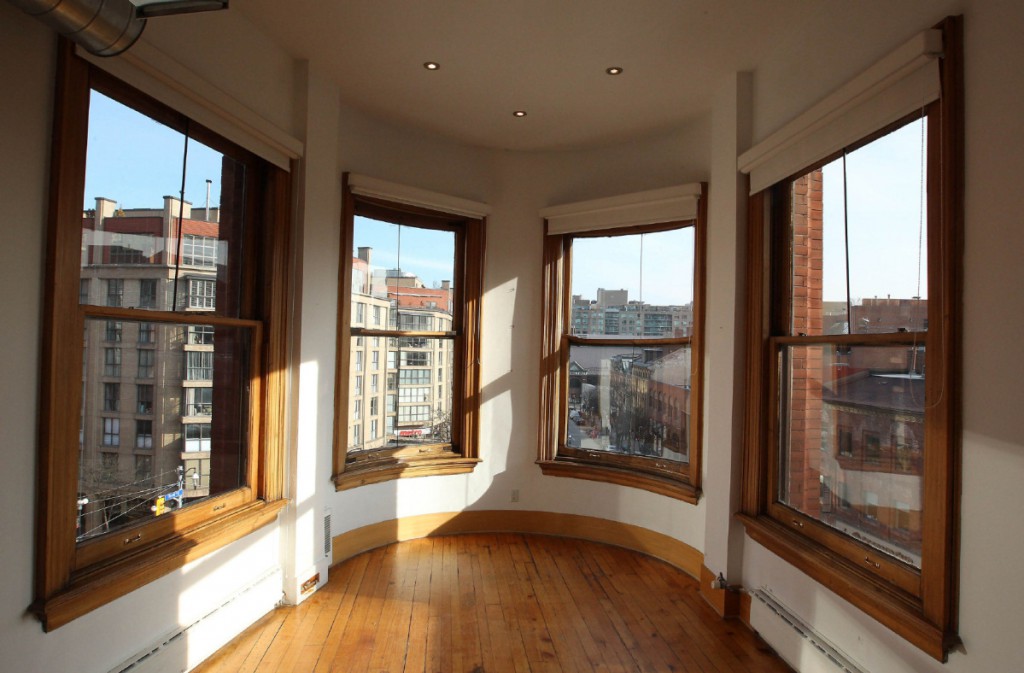
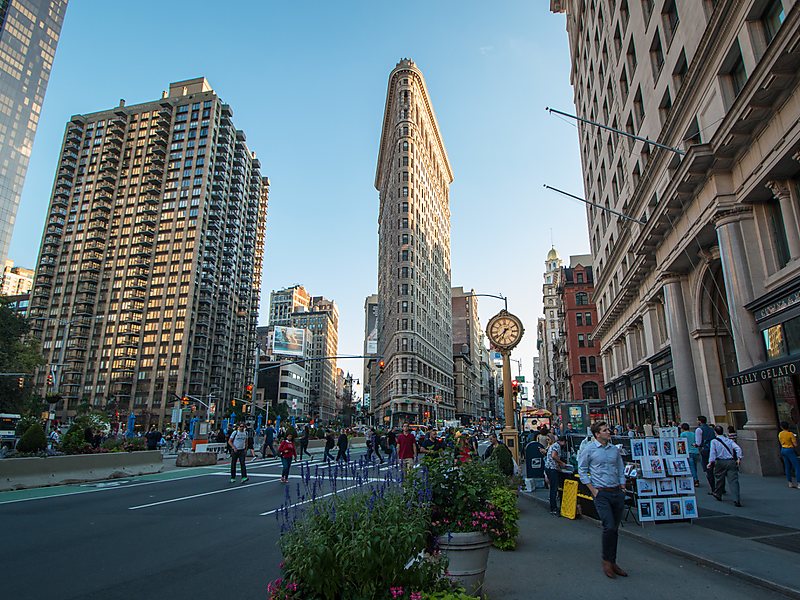
FROM:https://en.wikipedia.org/wiki/Flatiron_Building
FROM:Flatiron Building Daniel Burnham
Don’t you think it’s addictive?
Want to know more about the beauty of architecture?
Come and join our members to explore the beauty of architectural design.
覺得看得不過癮嗎?
想要知道更多建築之美嗎?
快來加入我們的會員,一同探索建築設計之美。
The above article is purely for appreciation and sharing purposes, as well as the construction of new technology and the public can be in-depth understanding of the information at the same time there are sources, will be able to query, no use of the document as a commercial transaction, if illegal, please inform the We will immediately remove the site, thank you for cooperation.
以上文章純粹作為欣賞及分享用途,以及將建築新型技術傳遞給與大眾能夠深入了解,同時資料還有來源,將可查詢,絕無使用該文件資料作為商業交易行為,如有違法請務必告知該網站我們將立即處理撤除,謝謝合作。

